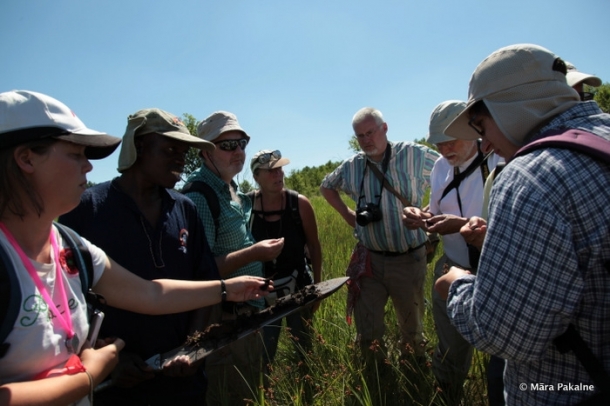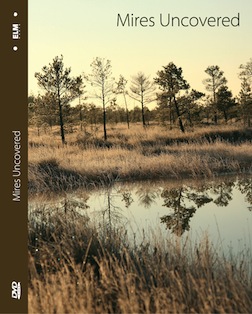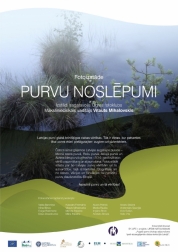Field Symposium of the International Mire Conservation Group in Slovakia and Poland 10/08/2010 00:00
From July 5-17 in Slovakia and Poland the field Symposium and the conference of the International Mire Conservation Group (www.imcg.com) was held. There were over 40 participants from 18 countries, including European countries - Ireland, France, Switzerland, Germany, Poland, The Netherlands, Estonia, Latvia, Ireland, France, Switzerland, Germany, Poland, The Netherlands, Estonia and Latvia as well as Canada, South Africa, New Zealand and Malaysia. The field symposium included visits to more than 20 mires in Slovakia and Poland that comprise spring mires, transitional mires and bogs, as well as wet meadows. Field discussions were devoted to mire conservation and management problems. The sites include rare and protected plant and animal species. Special attention was paid to fens and spring mires - the habitat that is protected both in European countries and in Latvia.
The Mociar Nature Reserve is located in Slovakia. It comprises peculiar spring mires and is located at the foothills of Tatra Mountains. The area of the Nature reserve is only 6.75 ha but many rare mire species and habitats are recorded, like Schoenus ferrugineus, Blysmus compressus, Carex davalliana, C. hostiana, Dactylorhiza incarnata, Gymnadenia densiflora, Tofieldia calyculata, Trichophorum pumilum, Cladium mariscus, Triglochin maritima, Primula farinosa, Pinguicula vulgaris, Drepanocladus cossonii, Bryum pseudotriquetrum and Campylium stelltum. Tufa formation was observed near springs. Although the site includes especially protected mire habitats in Europe, in this site the hydrological regime has been changed due to human activities as well as the site has been polluted.
In Slovakia especially protected mire habitats and wet grasslands occur in the Belianski meadows, where Pedicularis sceptrum-carolinum and Swertia perennis occur. The Poš Nature Reserve is located at the foothills of Tatra Mountains and includes fen and transitional mire vegetation with Eriophorum angustifolium, Comarum palustre, Carex limosa, Menyanthes trifoliata and Sphagnum species, like Sphagnum subsecundum, S. Central and S. platyphyllum.
In Poland a great number of mires have been influenced by human activities, but still mires in a natural status occur in the Rospuda River valley. Fens and transition mires with rare plant species, Liparis loeselii, Saxifraga hirculus, Hamatocaulis vernicosus are known there. The mires in Rospuda River valley were endangered by the government decision to build a highway that would cross the valley. In this case, the whole mire ecosystem would be destroyed. Thanks to the active response of the community and the interference of the European Commission that insisted on the need of the Environment Impact Assessment for the site, building of the highway was stopped. It allowed maintain this unique mire ecosystem with fen and transition mire habitats.
Dr. biol. Māra Pakalne
EC LIFE project manager












